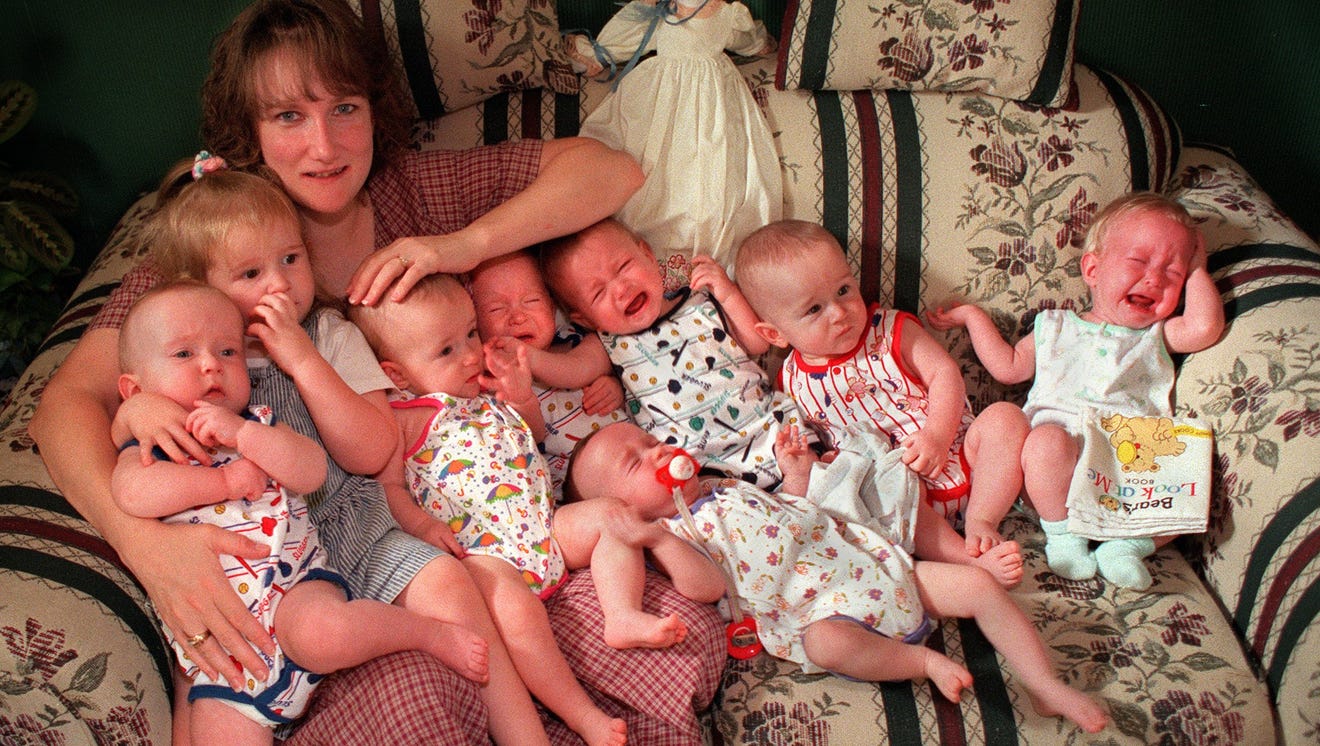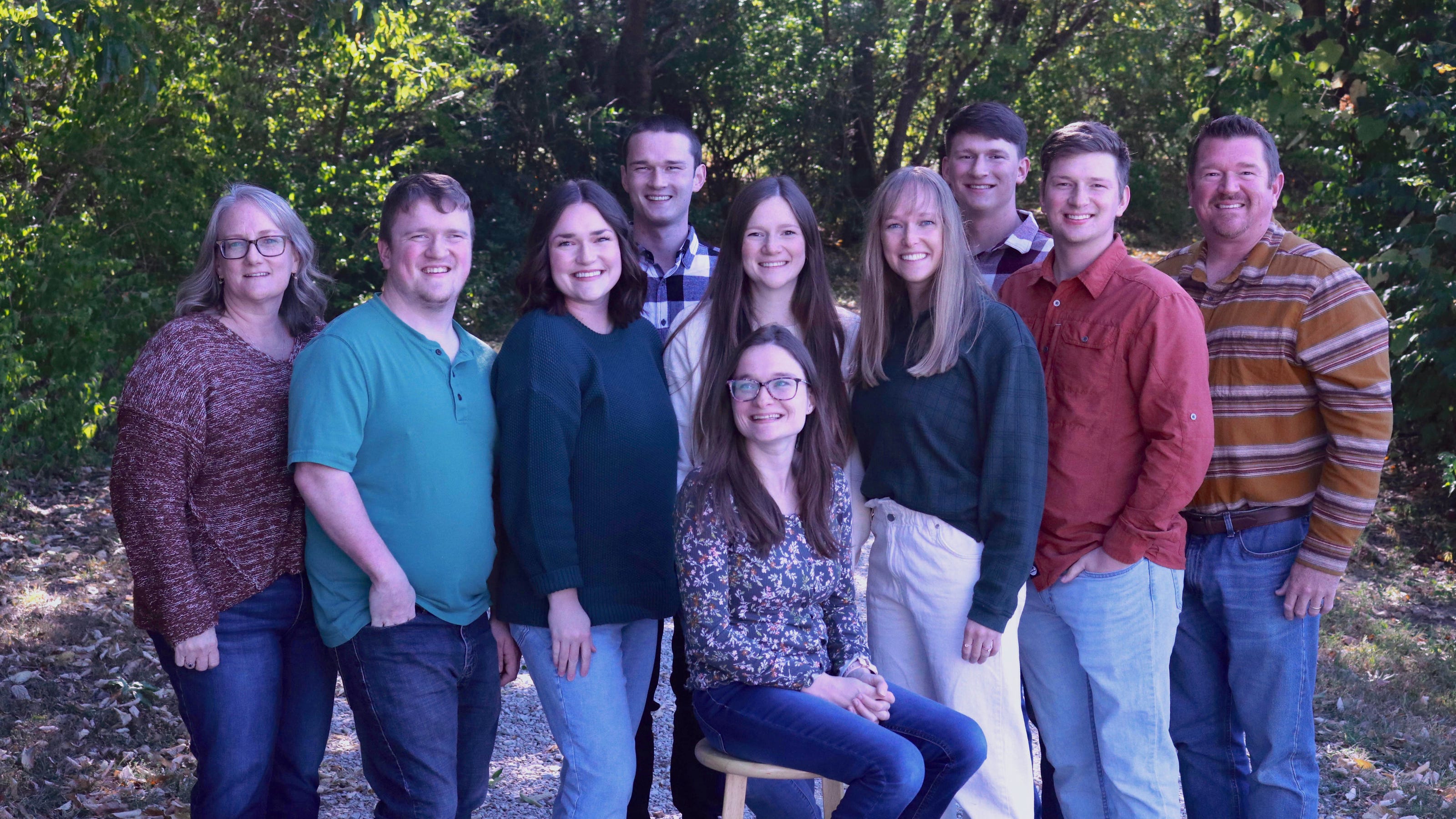Imagine this: a single pregnancy resulting in not one, not two, but SEVEN babies. Septuplets are one of the rarest and most incredible phenomena in human reproduction. They're not just a medical marvel—they're a testament to the resilience and complexity of life itself. In this article, we’ll dive deep into the world of septuplets, exploring everything from their conception to their unique challenges and triumphs.
Septuplets are no ordinary occurrence. In fact, they’re so rare that only a handful of cases have been documented worldwide. This rarity makes them a subject of fascination for scientists, doctors, and the general public alike. But what exactly goes into creating septuplets? And how do families navigate the challenges of raising seven siblings born at the same time?
Join us as we explore the science, the stories, and the sheer wonder of septuplets. From groundbreaking medical advancements to heartwarming family tales, this article will leave you amazed by the power of nature and nurture working together.
Read also:Masahubcom Your Ultimate Destination For Digital Solutions And Beyond
Understanding Septuplets: A Brief Overview
Septuplets, or seven babies born in a single pregnancy, are an extraordinary phenomenon. To put it into perspective, the chances of conceiving septuplets naturally are astronomically low—about 1 in 60 million. Most septuplet pregnancies are the result of fertility treatments, which increase the likelihood of multiple births. But even with modern medicine, septuplets remain incredibly rare.
In this section, we’ll break down the basics of septuplets and why they’re so fascinating:
- Septuplets are the result of seven embryos developing simultaneously in the womb.
- They are more common in cases where fertility drugs or in vitro fertilization (IVF) are used.
- The survival rate of septuplets is relatively low due to the high risk of premature birth and complications.
Despite these challenges, the families of septuplets often describe their experience as both daunting and deeply rewarding. It’s a journey that tests the limits of human endurance and compassion.
The Science Behind Septuplets
Now, let’s get into the nitty-gritty of how septuplets happen. The science behind multiple births is complex, and septuplets take this complexity to a whole new level. For starters, septuplets can occur naturally, but it’s extremely rare. Most cases involve fertility treatments, which stimulate the ovaries to release multiple eggs during a single cycle.
Factors Contributing to Septuplet Pregnancies
Several factors contribute to the likelihood of septuplet pregnancies:
- Fertility Treatments: Drugs like clomiphene citrate and gonadotropins increase the chances of multiple ovulations.
- Maternal Age: Women in their late 20s and early 30s are more likely to have multiple births.
- Genetics: A family history of multiple births can increase the odds.
It’s important to note that while fertility treatments can increase the chances of having multiples, they also come with risks. Doctors often advise against aiming for high-order multiples due to the potential health complications for both the mother and the babies.
Read also:Hdhub4ufaith The Ultimate Movie Streaming Experience Youve Been Searching For
Challenges Faced by Septuplet Families
Raising septuplets is no small feat. The challenges faced by these families are immense, ranging from medical concerns to logistical nightmares. Let’s take a closer look at some of the biggest hurdles:
Medical Challenges
Septuplet pregnancies are considered high-risk due to the increased likelihood of complications. Premature birth is a major concern, as most septuplets are born before 30 weeks of gestation. This can lead to a host of health issues, including:
- Respiratory distress syndrome
- Low birth weight
- Developmental delays
Mothers carrying septuplets also face significant health risks, including preeclampsia, gestational diabetes, and extreme fatigue.
Logistical Challenges
Once the babies are born, the real challenge begins. Raising seven infants simultaneously requires incredible organization, patience, and support. Families often need help from extended family members, friends, and even professional caregivers. Feeding, diapering, and scheduling naps for seven babies can feel like running a small business.
Notable Septuplet Cases
Throughout history, there have been only a handful of documented septuplet cases. Each one is a story of resilience and determination. Here are a few notable examples:
The McCaughey Septuplets
Perhaps the most famous septuplet case is that of the McCaughey family from Iowa. In 1997, Bobbie McCaughey gave birth to seven babies—four boys and three girls—after undergoing fertility treatments. The McCaughey septuplets made headlines around the world and became a symbol of hope and perseverance.
The Dilley Septuplets
In 2004, the Dilley family from Texas welcomed their own set of septuplets. This case was unique because the babies were conceived naturally, without the use of fertility treatments. The Dilley septuplets defied the odds and brought attention to the possibility of natural high-order multiple births.
The Role of Medical Advancements
Medical advancements have played a crucial role in improving the outcomes for septuplet pregnancies. Advances in neonatal care, fertility treatments, and prenatal monitoring have made it possible for more septuplets to survive and thrive. However, there’s still a long way to go.
Neonatal Care
Neonatal intensive care units (NICUs) are essential for the survival of premature septuplets. These specialized units provide round-the-clock care, including ventilators, incubators, and advanced monitoring systems. Without NICUs, the survival rate of septuplets would be significantly lower.
Fertility Treatments
Fertility treatments have revolutionized the field of reproductive medicine. While they increase the likelihood of multiple births, they also come with ethical considerations. Doctors and patients must weigh the risks and benefits carefully before proceeding with treatments that could result in septuplets.
Emotional and Psychological Impact
Raising septuplets isn’t just a physical challenge—it’s an emotional and psychological one as well. Parents of septuplets often describe feelings of overwhelm, joy, and exhaustion all at once. The emotional toll of caring for seven infants can be immense, but many families find strength in their support networks and community.
Building a Support System
Having a strong support system is crucial for septuplet families. This can include family members, friends, local organizations, and even online communities. Sharing experiences and advice with others who have walked the same path can be incredibly comforting.
Lessons from Septuplet Families
The stories of septuplet families offer valuable lessons for all of us. They remind us of the importance of resilience, adaptability, and community. Here are a few takeaways:
- Embrace the unexpected: Life doesn’t always go according to plan, and that’s okay.
- Lean on your support network: Don’t hesitate to ask for help when you need it.
- Celebrate every milestone: Whether it’s a first smile or a first step, every moment is worth cherishing.
The Future of Septuplets
As medical technology continues to evolve, the future looks brighter for septuplet families. Advances in fertility treatments, neonatal care, and genetic research may one day make it possible to reduce the risks associated with high-order multiple births. However, ethical considerations will always be at the forefront of these discussions.
Conclusion
Septuplets are a testament to the wonders of human biology and the strength of the human spirit. From their conception to their upbringing, septuplets challenge us to rethink what’s possible. While the journey of raising septuplets is undoubtedly challenging, it’s also deeply rewarding.
So, what can you do next? If you’ve enjoyed this article, we’d love to hear your thoughts in the comments below. Share it with your friends and family, and explore more articles on our site. Together, let’s celebrate the incredible diversity of life and the stories that make us human.
Table of Contents


:max_bytes(150000):strip_icc():focal(999x0:1001x2)/mccaughey-septuplets-c2c73a6b30ba43e8ad546f0c2678b254.jpg)